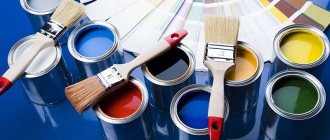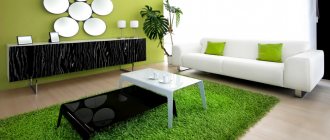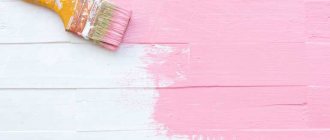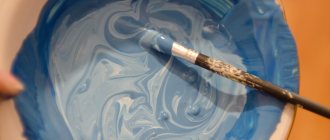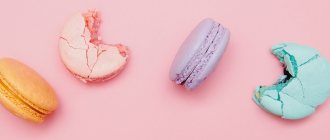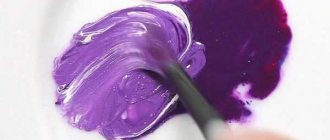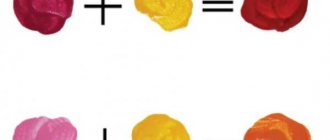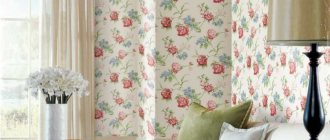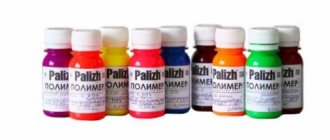If you don't know how to get blue, you should read the material below.
Blue color includes a huge number of shades. Therefore, if you want to create a blue color with your own hands, first decide what exactly you want to see in the end: cornflower blue or blue, indigo with a purple tint or rich cobalt, azure or electric blue. But there is also labradorite, ultramarine, cyan.
So how can you choose the shade of blue you need from all this variety? After all, it often happens that when buying paint we see one shade on a paper tester, but when applied to the surface to be painted we get a completely different one. The laws of physics come to the rescue, helping to understand the spectral components, imagination and, of course, the desire to achieve the desired result.
Variety of shades of blue
So, we have a blue color, which for some reason does not suit us - let’s say, it turned out to be too dark for a child’s room. No problem! Add a little white paint to the blue paint and see how intense the lightening is. Naturally, there is one pattern here: the more white paint you add, the lighter your desired blue will turn out.
And the next, equally obvious pattern: the darker the tone of blue paint we want to achieve, the more dark tones we need to add to it, for this purpose you can take brown, gray and even black, the main thing is not to overdo it, add little by little, gradually achieving the desired thickness and color saturation.
Shades
Natural dyes
Natural dye is valued much more expensive than synthetic options. This paint can be used to color textiles and food items. You can get blue from:
- grapes;
- blueberries;
- blackberries;
- eggplant peel;
- cauliflower leaves.
There are more exotic options for obtaining a base. They are too expensive and complex in terms of preparation technology. The above are actively used in the creation of food dyes, watercolors and gouache. But the resulting paint is completely safe for health and life. There are also disadvantages to using natural dyes: they wash quickly, the base is unsaturated, and leaves marks on the skin and surfaces.
Obtaining natural dyes (1 video)
Rich variety of blue (40 photos)
How to get ultramarine blue, blue, sea green by mixing paints: proportions
We have already said that there are many shades of blue. How to achieve their diversity with only two colors at hand: blue and white? The answer lies on the surface - of course, varying the proportions.
- ultramarine shade - take more blue, less white, in a ratio of 3:1.
- If you decide to achieve blueness , feel free to add more white, let the proportion be 2:1. If you want a light and transparent blue tone, mix the colors equally. But adding turquoise shades will not give transparency, but saturation.
- Want to enjoy aqua color all year round? You don't have to live by the sea to do this. Just decorate the room in appropriate colors, for which add one green and white paint to two parts of blue. A little more white - and the wave will be sunny, summer, gentle, more green - more mysterious, alluring depth of color.
How to get a dark blue color by mixing colors: proportions
Dark blue is also available at home, just take aquamarine paint and mix it with black. The ratio depends on how dark the desired color is. The result is easy to achieve: the more black paint, the darker and richer your blue will be. To avoid “darkening,” simply add the black component a little at a time, stirring thoroughly and evaluating the resulting color. And don’t judge the shade by what you see in the mixing container - don’t be too lazy to make a few strokes on a regular sheet of paper - when the paint dries, you will see the real color.
Shades
If suddenly you get carried away and still go too far with black, add a little white paint. Just a little! It is better to constantly try intermediate shades than to pour in black again.
- Are you a fan of purple shades? They can also become the basis for blue. But not just blue, but reminiscent of the night sky. To do this, take three parts of blue paint and one part of purple. Mix them up and look into the blue of the night. And if you apply 2-3 layers of paint, your sky will become bottomless.
- Subtle ultramarine combined with yellow can give the resulting blue a sparkling emerald blue if you use equal parts of the two. And if you need a pastel variation of emerald, you should shade the resulting mixture with white. The secret is simple: the more white, the paler the shade.
- Green paint and the same amount of aquamarine will help you achieve a deep blue color, filled with shades of the infinity of space or the abyss of the sea.
Getting blue
- If there is no base color, but blue is simply necessary, try experimenting. Red and green, mixing their colors, give an unusual range, close to the brilliance of sapphire . This color cannot be called ultramarine, but by adding black and white notes to it, you can get your own variations of its shades.
- A grey-blue tint will result if you add brown paint to the blue, which will darken the base color.
- Blue can also be achieved by mixing pink with aquamarine.
Traditional color wheel
Experts call blue, red, and yellow the “three pillars” of color and painting. It is on them that the widest palette of halftones of the second and third orders rests; they are combined with each other, while creation by mixing paints is excluded.
All the most important colors are included in the so-called color wheel. It represents a conditional model divided into sectors. The latter are placed in an order close to their location in the visible light spectrum. The adjacent shades are called chromatic; they can be mixed together to obtain a new chromatic (color) paint. If, when mixing paints, you take opposite tones, the result will be an achromatic color (grayish). That is, the further the colors are from each other, the more likely it is that their mixture will give an inexpressive, ugly tone.
Blue color in everyday life: useful tips
If you are experimenting with colors when making renovations, then take into account not only the resulting shade, but also what surface will be painted with it. Therefore, be sure to try on a small area the color created by your imagination.
- A tip for housewives who love to cook unusual, bright dishes: for blue notes in your culinary masterpiece, you can safely use blackberries, blueberries, blue grapes and even eggplant peel.
- Natural blue dyes are among the rarest. How many blue pigments can you remember, besides lapis lazuli? What about precious stones other than sapphire?
Dyes
But this mysterious color, depending on its saturation, can create diametrically opposite effects.
So, if you want to get favorable terms of the deal from your partner, conduct negotiations surrounded by light blue, which helps you focus on the main thing. And many psychologists say that wearing blue clothes makes people calmer.
Computer graphics and basic palette
It is possible to create blue color under so-called “artificial conditions” without any problems. Even though it is basic, a specific condition can be found. The software provides the ability to synthesize any color using a correctly written binary code.
Unlike typography and artists, programmers do not face the problem of obtaining the main color to obtain this base. The main thing is to choose the appropriate software environment.
